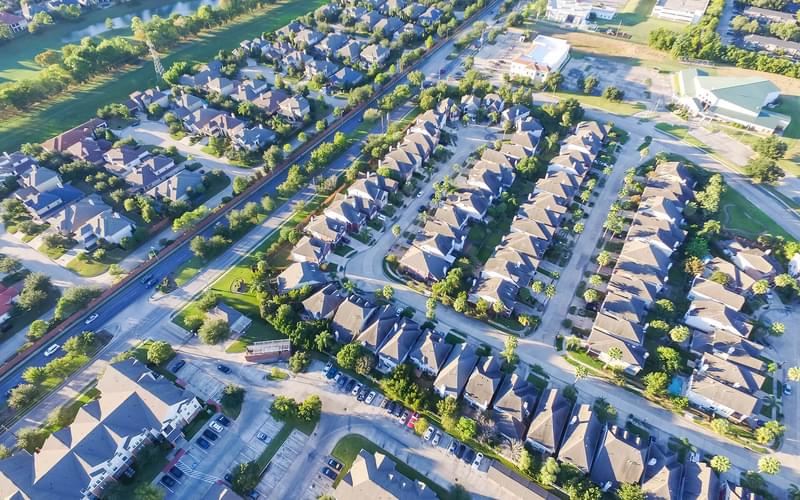Nutrient neutrality: There’s something in the water

“ Nutrient neutrality has bloomed into a huge issue standing in the way of vital new housing development. Our future communities must seek a more sustainable way forward, balancing the needs of regulator and developer. ”
Alastair Clay
Divisional Director

Developments on hold, trips to the High Court, nutrient credit schemes...it’s the stuff of nightmares. Since a European Court of Justice ruling in 2018, nutrient neutrality has caused delays and blockages for developers and landowners.
The problem
Nitrogen and Phosphorus are essential nutrients for plants. Often used as fertilisers they boost growth and increase crop yields.
They’re also a pollutant. And herein lies the problem. High concentrations entering the water system from agriculture, industry, and domestic sewage are harming some of the UK’s most important protected species and habitats.
The nutrients lead to algal blooms, starving the water of oxygen, smothering plant life and causing fish and other water-based species to die. In doing so, removing a vital food source for birds and other wildlife.

A European Court ruling
A European Court of Justice ruling known as the “Dutch N” case is causing severe delays for housebuilders and having a huge impact on the under-delivery of homes across the UK.
In March, the government extended the number of local planning authorities that are unable to give planning permission where a development is likely to add to nutrient pollution to water by 42. This means a total of 74 councils are now affected.
Among these, local authorities across Yorkshire and the north-east are now being advised by Natural England to refuse developments that aren’t nutrient neutral, consequently impacting the progress of plans near the River Tees or any of its tributaries.
It will likely become a standard planning condition for developments to demonstrate there won’t be an impact on the local area as defined, and covered, under the Conservation of Habitats and Species Regulations (2017).
The impact on development and housing
The Home Builders Federation estimates that around 120,000 homes nationally are being delayed because of the nutrient neutrality problem. The majority of these – 18,766 – are concentrated in the Teesmouth & Cleveland Coast catchment in the north of England.
But it really is a UK-wide issue. One we’ll have to tackle quickly. Otherwise, according to scenario models, there could be a reduction of between £269m and £305m of economic output produced by builders, their contractors, and suppliers.
As we’ve seen in areas which already suffer from high levels of nitrate pollution, such as around The Solent, River Avon and Poole Harbour, new homes have been built faster than the water treatment infrastructure needed to support them. Primarily due to the national network of sewage works lacking the adequate capacity and equipment to purify effluent generated by housing demand to a sustainable level.
But what can we do about it?
Sustainable urban drainage systems to the rescue
Future communities must seek a more sustainable way forward. For surface water run-off not only do we need to consider water quantity so we can mitigate flooding, but we should also place equal focus on water quality and biodiversity. Implementing sustainable drainage solutions that can also be used as an amenity means that we can mitigate the negative impact that human activity is having on our environment and create a positive habitat for people, animals, and plant life alike.
Sustainable solutions for surface water drainage are collectively known as sustainable urban drainage systems (SuDS). Some of these techniques have an inherent ability to improve water quality, making them a recognised solution for nutrient neutrality
Examples of SuDS include creating wetlands, grasslands or woodlands that utilise a natural process of removing the nutrients from the water. They create cleaner, greener developments, benefiting users and the environment, reducing flooding, limiting installation and future maintenance costs, and easing pressure on the UK’s struggling infrastructure.
We put these to good use as part of our consultancy to Longford Park, Oxfordshire, which is a 1,000-home future community with village centre. It lies to the south of Banbury and is constructed on former agricultural fields.
The process
As a process, achieving nutrient neutrality requires mitigation as part of any new development.
Hydrock’s water environment team are helping to protect vulnerable rivers, lakes, and water bodies, securing the sustainable homes and healthy nature that make attractive places for people to live.
The most environmentally friendly solutions treat surface water using SuDS, which are now a National Planning Policy Framework (NPPF) requirement. The alternative is offsetting any increase in nutrient loading by converting land on- or off-site using more traditional methods.
As a general methodology, water environment experts follow a three-stage process:
- 1: Identify risk / requirements.
- 2: Calculate the net increase of Total Nitrogen and Total Phosphorus.
- 3: Assess the available mitigation measures.
Our approach has been developed to try and find the balance between what is considered acceptable from a regulatory point of view but also working in the best interest of our clients.
In an ideal scenario, the approach of identifying the risks and requirements would be undertaken within the early stages of site development. Consequently, any potential impacts on development are known from the start and, where possible, the more sustainable elements of the ‘Hydrock Hierarchy’ can be achieved – for example, wetlands, swales, basins, etc.
This allows for a many-stepped process with supporting evidence in the event the ‘top treatment’ route cannot be achieved owing to other constraints within the site.
Help on the horizon?
An amendment to the Levelling Up and Regeneration Bill has been tabled. The government is proposing to remove the requirement for housing projects in protected areas to be ‘nutrient neutral’ – in other words, relaxing its policy so that the pipeline of in excess of 100,000 much needed homes can flow.
To combat water pollution without stymying development, the government's announcement confirms a package of hundreds of millions of pounds to reduce water pollution in other ways.
Priority is being given to addressing the primary source of water pollution with £200m in grants to farmers and water companies to improve slurry infrastructure to make leaks less likely, while around another £280m will be spent helping builders mitigate the impact of their schemes
Natural England will also increase the inspections it conducts on farms, support farmers in employing innovations to avoid nutrient runoffs, and double down on the requirements for sustainable urban drainage systems in housing developments.
According to the government’s announcement, homebuilders will also be consulted regarding the best ways to ensure developers “make an appropriate and fair contribution” to nutrient neutrality efforts. Ultimately this is heading in a similar direction to what biodiversity net gain has over the last several years with credit schemes becoming available to developers, albeit at staggering costs.
It'll cost billions to solve the crisis nationally by implementing the long-term resilient water systems we need in place. As such, the government also reiterated its push to have water companies invest in their infrastructure ahead of 2030.









